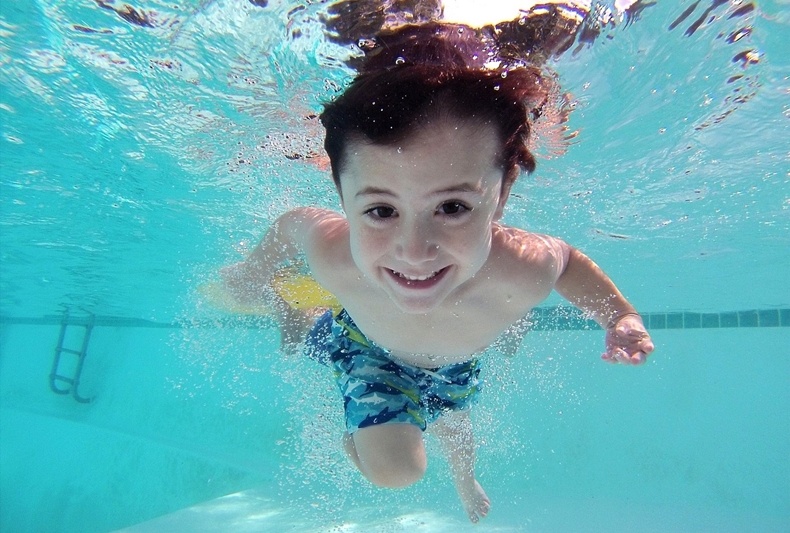
The number of children that drown every year is astonishingly high and so it’s more important than ever to encourage your child’s confidence in the water. Swimming for the first time can be terrifying, and not everyone takes to it so easily, leaving some children struggling to come to terms with how to swim.
Whether your child is 6 months or 6 years, here are 6 safety rules that will keep your child safe when you go swimming with them for the first time.
1. Monitor the time
Whilst it’s good to get them in the pool early – this will help them get used to the idea – it’s also important to ensure you monitor the timings. Allowing your baby to enjoy the water in the bath is a great way to kick-start this process, but when it comes to taking them into the pool for the first time, there are a couple of things you need to be mindful of:
- The temperature of the pool – A baby’s temperature can drop more quickly compared to adults, so staying in the pool too long might not be a great idea.
- Your baby’s skin – Your baby’s skin is much more delicate than an adult’s and so the chemicals used to sterilise the water could cause irritation.
2. Practice good hygiene
The Amateur Swimming Association advises waiting until your baby is six months old before going swimming. They also advise waiting until your baby has had their standard vaccinations against:
- Diphtheria
- Tetanus
- Whooping cough
- Hib
- Polio
Additionally, it is worth purchasing a swim-diaper to prevent contaminating the water. This type of diaper will be waterproof and specially designed for use in the pool.
____________
Read More:
Things to Know Before Sending Your Child to Summer Camp
Car Safety Tips for Kids During Summer You Should Know
Common Summer Toddler Skin Problems
___________
3. Never leave them alone
You should never leave your child alone in the water. Any child under the age of 5 should be within arms’ reach in case they start to struggle. Even if your child is a strong swimmer, there can be moments of panic where they forget how to swim and start to choke on the water, especially if they can’t reach the floor.
4. Don’t rely on inflatables
Whilst inflatables are great for helping to teach your child the basics in swimming, you shouldn’t rely on them. A water ring may be a great idea to help keep your baby afloat in the pool, but this creates a false sense of security. Staying upright in the water isn’t the most constructive way of learning how to swim and could be counterproductive as it won’t teach them the mechanics of being in the water.
5. Don’t dunk
You should never dunk a child under the age of 3 as they are likely to swallow large amounts of water which could cause drowning or upset their stomach. This could also increase their fear of swimming and create problems further down the line.
6. Be patient
Most importantly, it’s vital that parents are patient as children will react differently. Take a relaxed approach and make it a fun experience. If your child doesn’t take to the water immediately, it doesn’t matter, but introduce them to it slowly. Allow for skin to skin contact to help reassure them and stay positive.
Resources:
https://www.momtricks.com/babies/introduce-baby-to-swimming/
https://www.livestrong.com/article/238574-10-safety-rules-when-swimming/
https://www.rospa.com/leisure-safety/water/advice/taking-children-swimming/
{{cta(‘fc72df7e-0a72-4775-8f92-a60d7d716936’)}}

